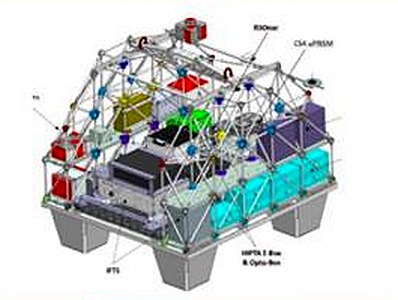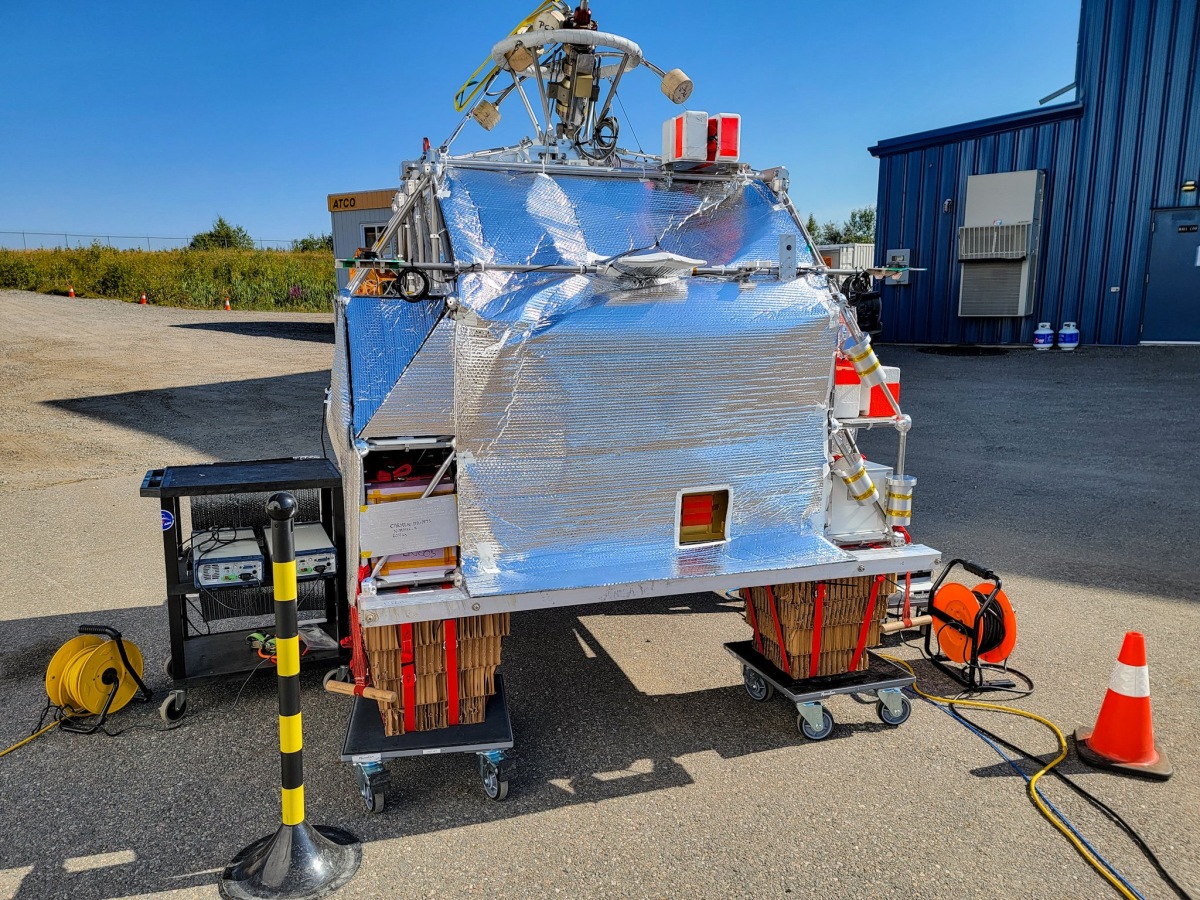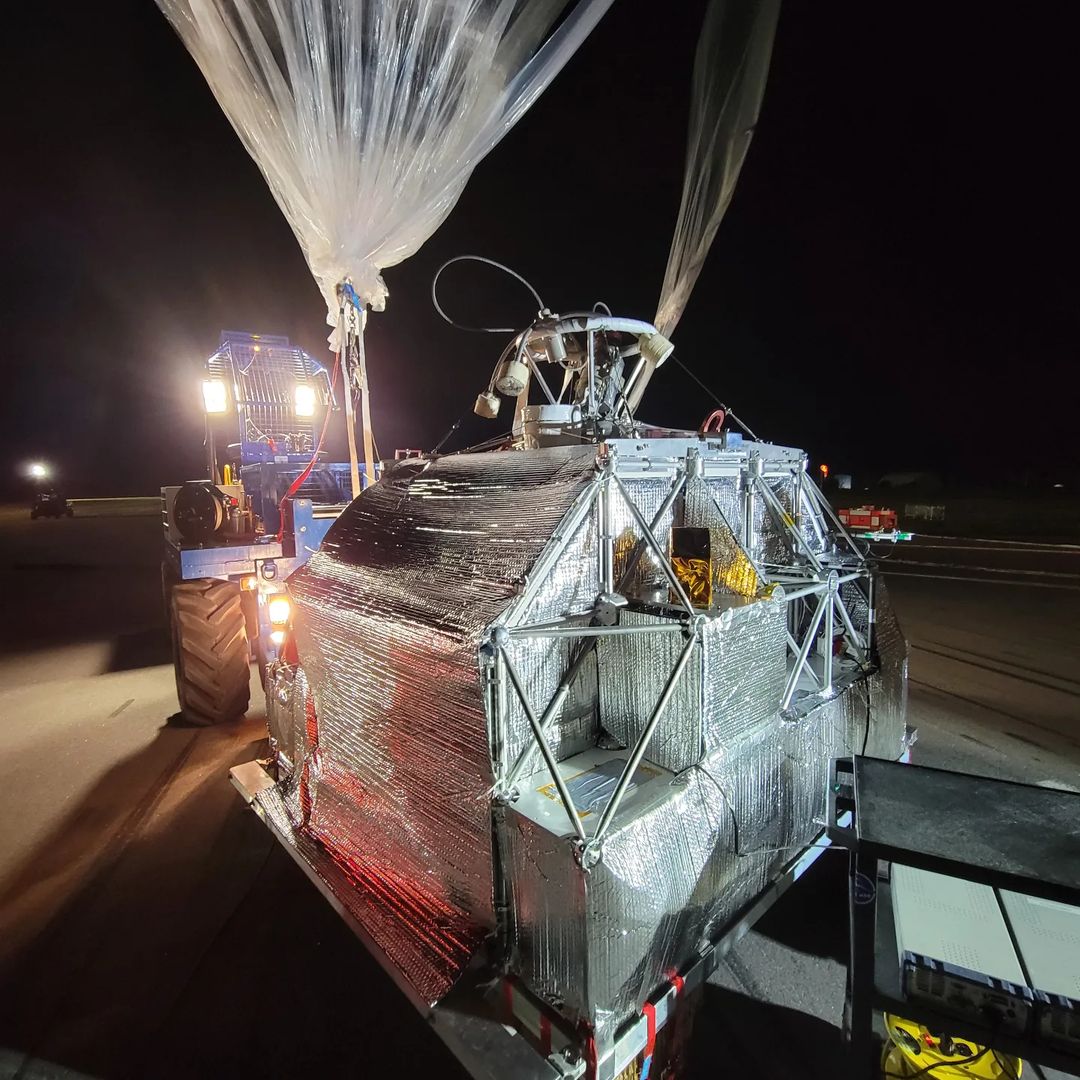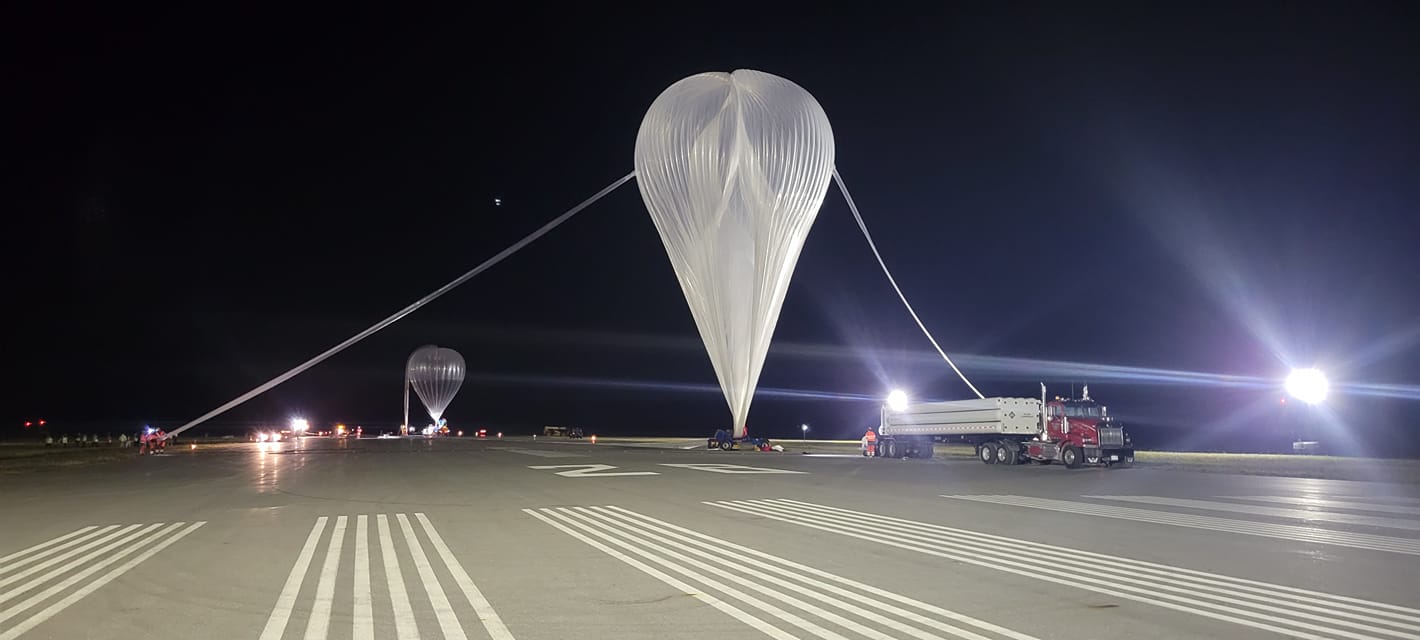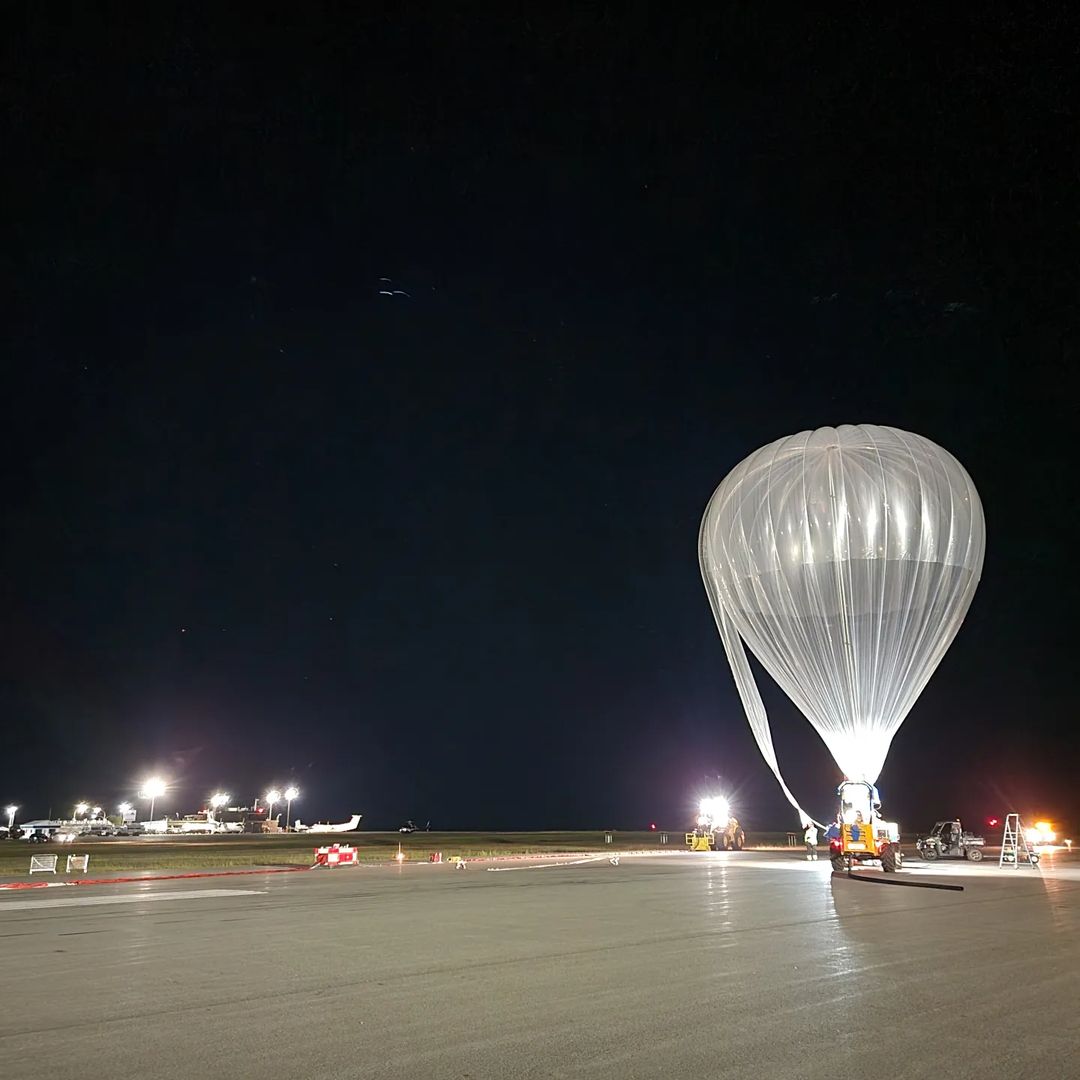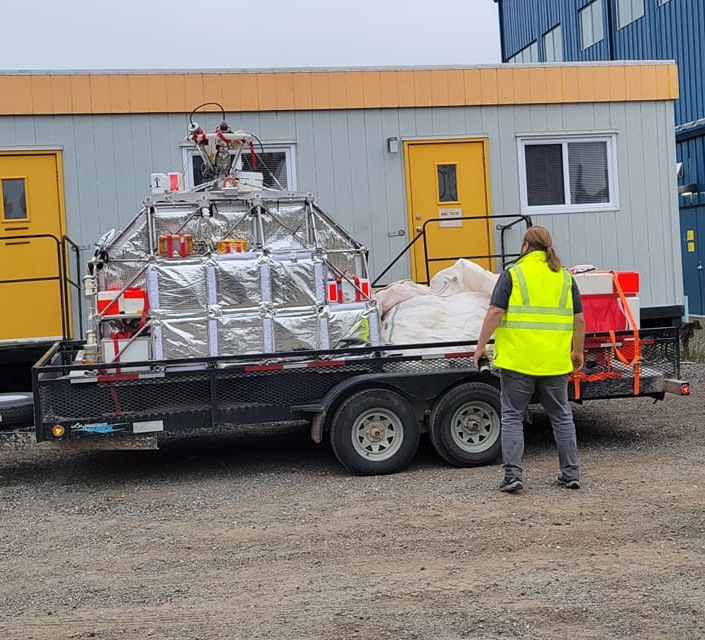Purpose of the flight and payload description
The IFTS mission was the third flight of the Strato Science 2022 campaign aimed to perform a series of experiments devoted to remote sensing and studies of atmospheric composition. At left we can see an scheme of distribution of the payloads in the platform (click to enlarge).
It used as platform CARMENCITA a multipayload stabilized gondola originally introduced in late 2012 by the Nacelles Pointees (Pointed Platforms) CNES team and was developed with several concepts in mind: modularity to allow the inclusion of several instruments devoted to the same or different research areas in one mission, reusability to overcome the difficult to adapt a platform specifically designed around an instrument to another, thus reducing costs and developing times and finally cargo volume which is maximized to allow the installation of many instruments.
The experiments onboard were:
Imaging Fourier Transform Spectrometer (IFTS) developed by the Canadian Space Agency under contract to ABB Canada and the University of Saskatoon, is a technology demonstrator of a high spectral resolution imager for atmospheric carbon dioxide and methane.
ALI V2 (Aerosol Limb Imager Version 3) an atmospheric monitoring tool developed by the University of Saskatchewan that measures the concentration of aerosols in the upper atmosphere using a unique optical device. The one flown in this mission wa an improved version of an instrument that was successfully deployed on stratospheric balloons in 2014, 2017 and 2021. The upgraded version of ALI can detect a wider range of optical wavelengths, measuring both orientations of the polarization state. The development of the instrument is supported by the CSA's FAST funding initiative.
HIPTA developed at the Defence Research and Development Canada center Valcartier is a technological project to demonstrate the effectiveness of a high-sensitivity Earth observation camera.
RSOnar developed by a team of York University is a technology demonstrator of a dual-purpose, commercial grade, CubeSat compatible star tracker concept for space-based space surveillance.
Details of the balloon flight
Balloon launched on: 8/22/2022 at 3:18 utc
Launch site: Timmins Stratospheric Balloon Base, Ontario, Canada
Balloon launched by: Centre National d'Etudes Spatiales (CNES)
Balloon manufacturer/size/composition: Zero Pressure Balloon model 402z Airstar - 402.000 m3
Flight identification number: Nimbus-3
End of flight (L for landing time, W for last contact, otherwise termination time): 8/22/2022 at 17:10 utc (L)
Balloon flight duration (F: time at float only, otherwise total flight time in d:days / h:hours or m:minutes - ): 18 h 50 m
Landing site: 160 km NW of Timmins, Ontario, Canada
Campaign: Strato-Sciences 2022
External references
- A Dual-Purpose Camera for Attitude Determination and Resident Space Object Detection on a Stratospheric Balloon Sensors 2024, 24(1), 71;
- An Imaging Fourier Transform Spectrometer (IFTS) for Climate Observations Thesis by Singh, Gurpreet, York University (2019)
- Strato-Science 2022 campaign Canadian Space Agency website
- Stratospheric Night Sky Imaging Payload for Space SituationalAwareness (SSA) Sensors 2023, 23(14), 6595
16145If you consider this website interesting or useful, you can help me to keep it up and running with a small donation to cover the operational costs. Just the equivalent of the price of a cup of coffee helps a lot.

